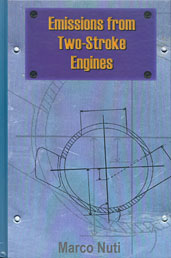Technical Paper
A One-Dimensional Model for Monolithic Converter: Numerical Simulation and Experimental Verification of Conversion and Thermal Responses for Two-Stroke Engine
1991-02-01
910668
A transient one-dimensional model developed to simulate the thermal and conversion characteristics of adiabatic monolithic converters operating under warm-up conditions is presented. The model takes into account the gas-solid heat and mass transfer, axial heat, conduction, chemical reactions and the related heat release. The model has been used to analyze the transient response of an axisymmetric catalytic converter during a warm-up as a function of catalyst design parameters and operating conditions in order to observe their effects on the lightoff behaviour. The experimental test was carried out in two steps: the first on a sample for lightoff test and the second on two-stroke 150 cc engine with Pt/Rh metal-supported catalyst and full open-throttle condition. The simulated temperatures are close to test results. The predicted conversion efficiencies are qualitatively acceptable.

